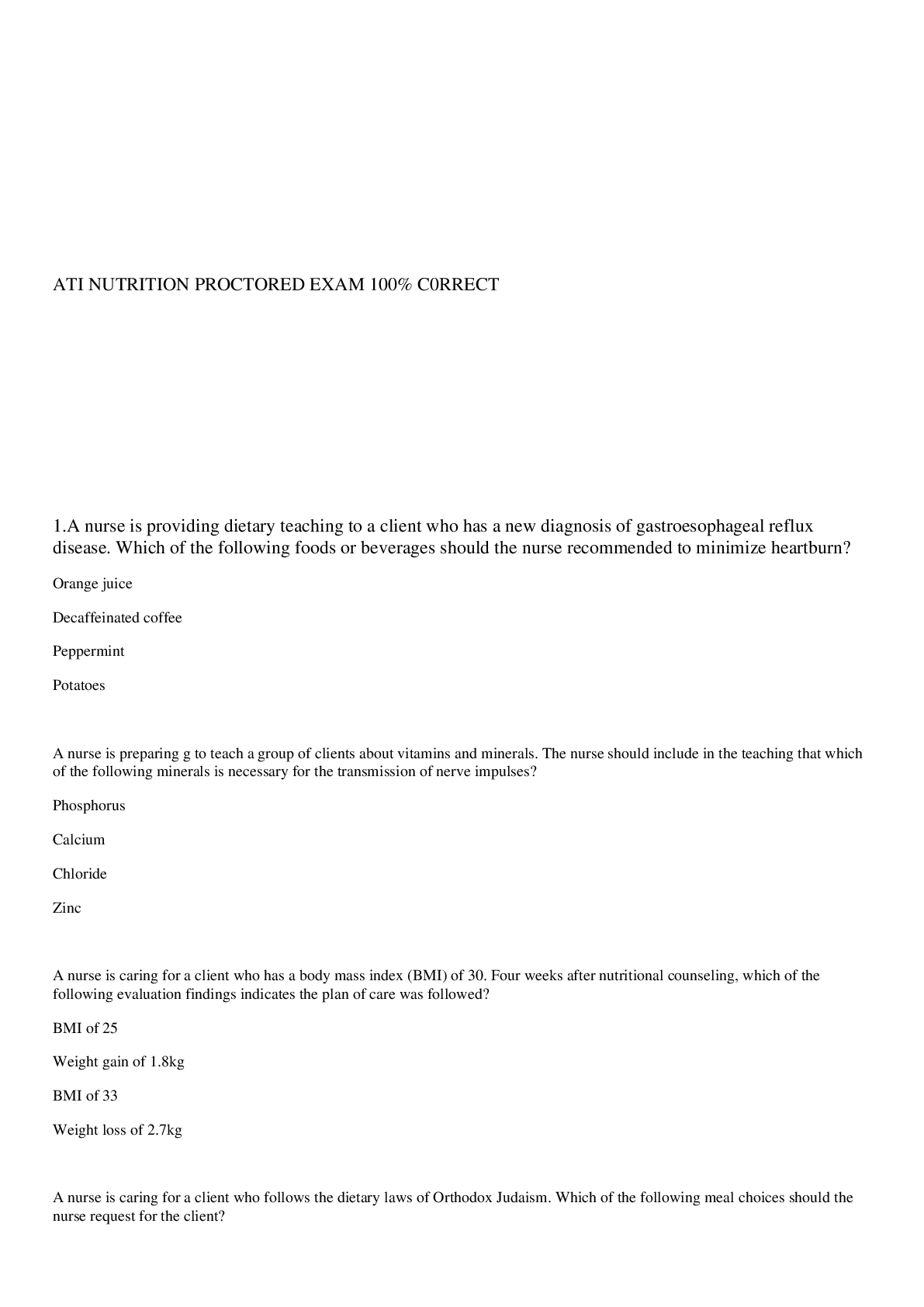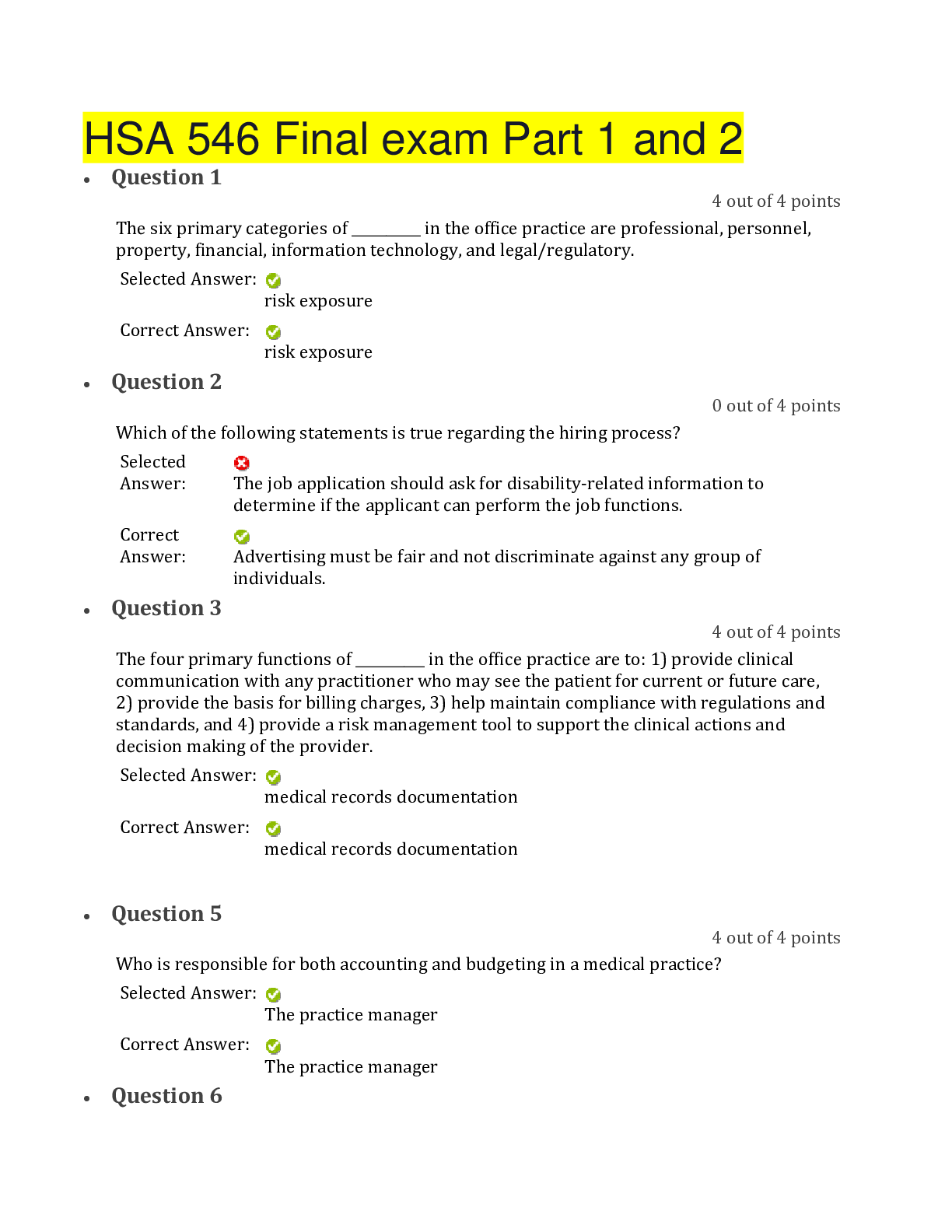Pathophysiology > EXAM > PATHO 3129 Chapter 28 to 30 Exam (100 out of 100) Questions and Answers (All)
PATHO 3129 Chapter 28 to 30 Exam (100 out of 100) Questions and Answers
Document Content and Description Below
16. Gastrin production, a task that is performed by the stomach, results in which of the following effects? A) Stimulation of pancreatic enzyme secretions B) Stimulation of HCl secretions by parieta... l cells C) Conversion of polysaccharides to monosaccharides D) Release of insulin in response to glucose load Ans: B Feedback: The primary function of gastrin is the stimulation of gastric acid secretion. It does not have a direct effect on exocrine or endocrine pancreatic function, and it does not participate actively in the digestion of starches. 17. The stomach is the source of two hormones produced by the gastrointestinal tract: gastrin and ghrelin. Ghrelin is a peptide hormone produced in the mucosal layer that has an important role in regulation of: A) Gastric acid fluid B) Growth hormone C) Biliary bicarbonate D) Pancreatic enzyme Ans: B Feedback: Ghrelin hormone has an important role in regulation of growth hormone secretion and energy balance. Gastric acid secretion is regulated by gastrin (in the stomach) and secretin (in the intestine). Pancreatic enzyme, bicarbonate, and biliary fluid secretion are functions of cholecystokinin in the intestine. 18. When explaining absorption to a client, the nurse mentions that a number of substances require a specific carrier or transport system. An example the nurse could use relates to the transport of amino acids and glucose, which requires the presence of which of the following for absorption to occur? A) Potassium B) Phosphate C) Sodium D) Calcium Ans: C Feedback: Absorption is accomplished by active transport and diffusion. A number of substances require a specific carrier or transport system. For example, transport of amino acids and glucose occurs mainly in the presence of sodium. The other electrolytes are not required for this specific process. 19. While explaining digestion and absorption of nutrients to a client, the nurse mentions that the brush border enzymes would facilitate absorption of which of the following foods? A) Ice cream B) Green, leafy vegetables C) Garlic toast D) Fried catfish Ans: C Feedback: Brush border enzymes aid in the digestion of carbohydrates and proteins. The only food listed that is strictly carbohydrates is the garlic toast. 20. The physiological rationale for hanging normal saline (0.9% NS) or 5% dextrose in water (D5W) to a client who has been experiencing diarrhea includes: A) Facilitating the absorption of osmotically active particles B) Activation of the ATP channels C) Activating the pancreatic enzymes of trypsin and elastase D) Emulsification of fats Ans: A Feedback: Water absorption from the intestine is linked to absorption of osmotically active particles, such as glucose and sodium. It follows that an important consideration in facilitating the transport of water across the intestine (and decreasing diarrhea) after temporary disruption in bowel function is to include sodium and glucose in the fluids that are consumed. None of the other distractors addresses this principle. Activating the pancreatic enzymes of trypsin and elastase is needed for protein digestion and absorption. Emulsification of fats begins in the stomach and continues in the duodenum under the influence of bile from the liver. 21. The intestinal absorption of glucose and amino acids is facilitated by which of the following transport systems? A) Bile salt micelles B) Fat emulsification C) Sodium linked D) Brush border enzyme Ans: C Feedback: As with glucose, many amino acids are transported across the mucosal membrane in a sodium-linked transport system (for absorption) that utilizes APT as an energy source. Fat uses bile salts that form micelles for transport to the intestinal villi. Fat emulsification is a digestive process. Brush border enzymes break down carbohydrates for transport. 22. A client has been diagnosed with cholecystitis (gallbladder inflammation) that has impaired the normal release of bile. Which of the following gastrointestinal consequences is this client likely to experience? A) Incomplete digestion of starches B) Impaired glucose metabolism C) Inadequate gastric acid production D) Impaired digestion of fats Ans: D Feedback: Bile performs a central role in fat metabolism. Gallbladder disease and the accompanying disruption of normal bile release do not result in impaired digestion of carbohydrates, impaired glucose metabolism, or inadequate gastric acid synthesis. 23. A client's complex and worsening pressure ulcer has necessitated the use of numerous antibiotics over the last several months. Which of the following consequences may result from this client's medication regimen? A) Impaired mucus production B) Vitamin K deficiency C) Impaired protein metabolism D) Excessive release of pepsin Ans: B Feedback: Vitamin K is synthesized by colonic flora, and long-term antibiotic use can result in vitamin K deficiency. Antibiotic use does not curtail mucus production or protein metabolism, and it does not precipitate excessive release of pepsin. 24. A child who is experiencing the signs and symptoms of influenza has vomited frequently over the last 24 hours. While discussing vomiting with a group of nursing students, the instructor asks, “What site in the neurologic system is responsible for vomiting?” Which student response is most accurate? A) Myenteric plexus B) Intramural plexus C) Vagus nerve D) Chemoreceptor trigger zone Ans: D Feedback: The act of vomiting is integrated in the vomiting center, which is located in the dorsal portion of the reticular formation of the medulla near the sensory nuclei of the vagus. The vomiting center can be activated directly by irritants or indirectly following input from four different sources, one of which is the chemoreceptor trigger zone (which is activated by chemical agents such as drugs and toxins). 25. When caring for a cancer client experiencing chemotherapy-induced nausea and vomiting, which of the following drugs work to delay this nausea and vomiting by acting on the CNS to block the activation of the NK-1 receptors? Select all that apply. A) Serotonin (5-hydroxytryamine) antagonists B) Neurokinin-1 receptor antagonists C) Promethazine, a neuroleptic medication D) Compazine, a dopamine (D2) receptor antagonist Ans: A, B Feedback: The recently developed Neurokinin-1 (NK-1) receptor antagonists are used for the treatment of acute and delayed chemotherapy-induced nausea and vomiting. These drugs act centrally to block the activation of the NK-1 receptors in the vomiting center. Serotonin (5-hydroxytryamine) antagonists are involved in the nausea and emesis associated with cancer chemotherapy and radiation. Promethazine is a neuroleptic medication. Compazine, a dopamine (D2) receptor antagonist, depresses vomiting caused by stimulation of the chemoreceptor trigger zone.Chapter 29 1. A teenager who has a history of achalasia will likely complain of which of the following clinical manifestations? A) Excessive heartburn following a high-fat meal of French fries B) Feeling like there is food stuck in the back of the throat C) Projectile vomiting across the room unrelated to meals D) Vomiting large amounts of bright red emesis Ans: B Feedback: Achalasia produces functional obstruction of the esophagus so that food has difficulty passing into the stomach, and the esophagus above the lower esophageal sphincter becomes distended. Symptoms following high-fat intake is usually associated with gallbladder disease. Projectile vomiting is usually related to increased intracranial pressure. Vomiting blood can be associated with esophagitis, erosion of the esophagus, bleeding esophageal varices, or esophageal cancer. 2. A client has had severe heart burn associated with persistent gastroesophageal reflux for many years. Which of the following statements made by the client leads the nurse to suspect the client is having a complication related to his reflux? The client is having: A) Difficulty in swallowing with feelings that food is “stuck” in the throat B) Burning sensation a half-hour after a meal C) Substernal chest pain that radiates to the shoulder and arm D) “Hoarseness” unrelieved by coughing or taking a drink of water Ans: A [Show More]
Last updated: 8 months ago
Preview 1 out of 31 pages

Reviews( 0 )
Document information
Connected school, study & course
About the document
Uploaded On
Aug 17, 2023
Number of pages
31
Written in
Additional information
This document has been written for:
Uploaded
Aug 17, 2023
Downloads
0
Views
78



.png)










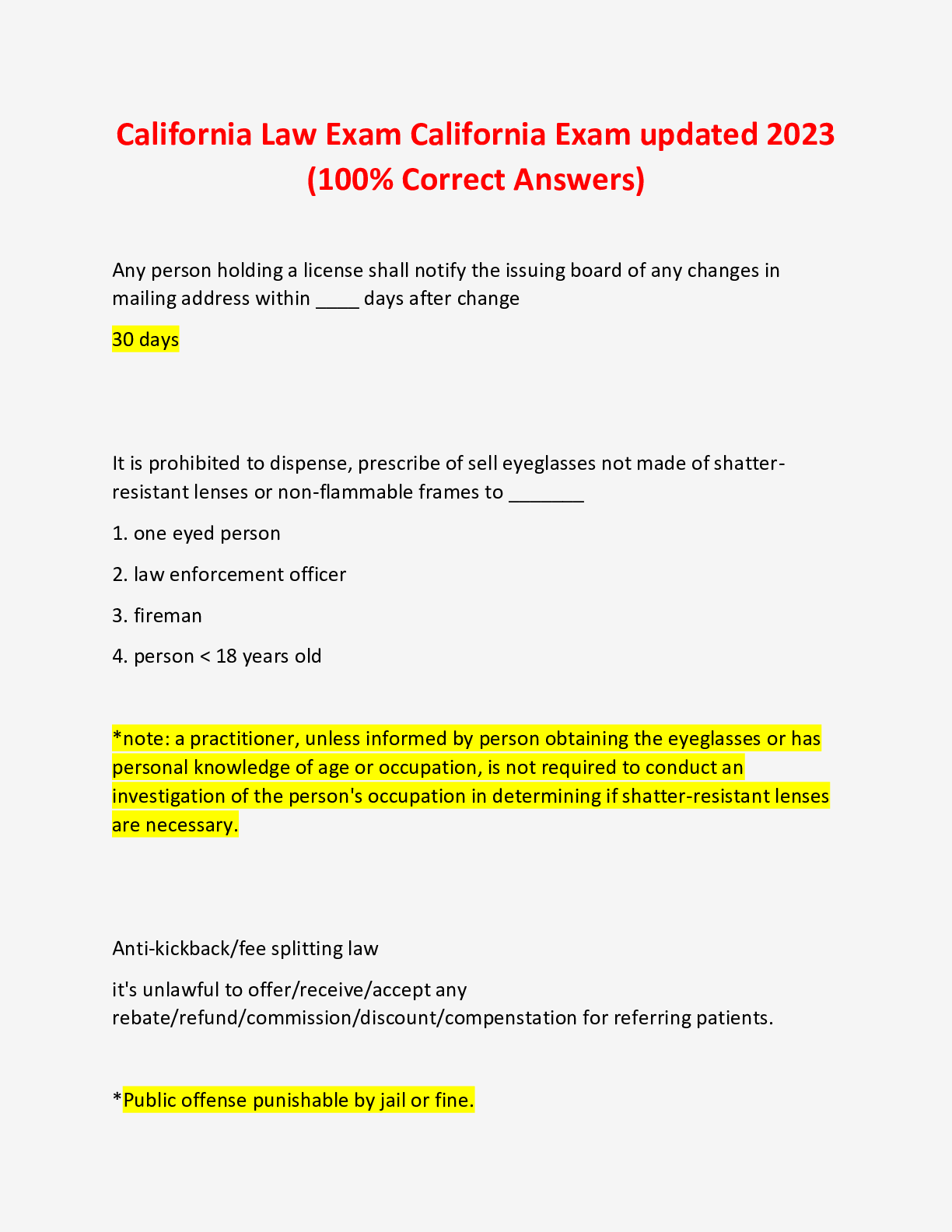






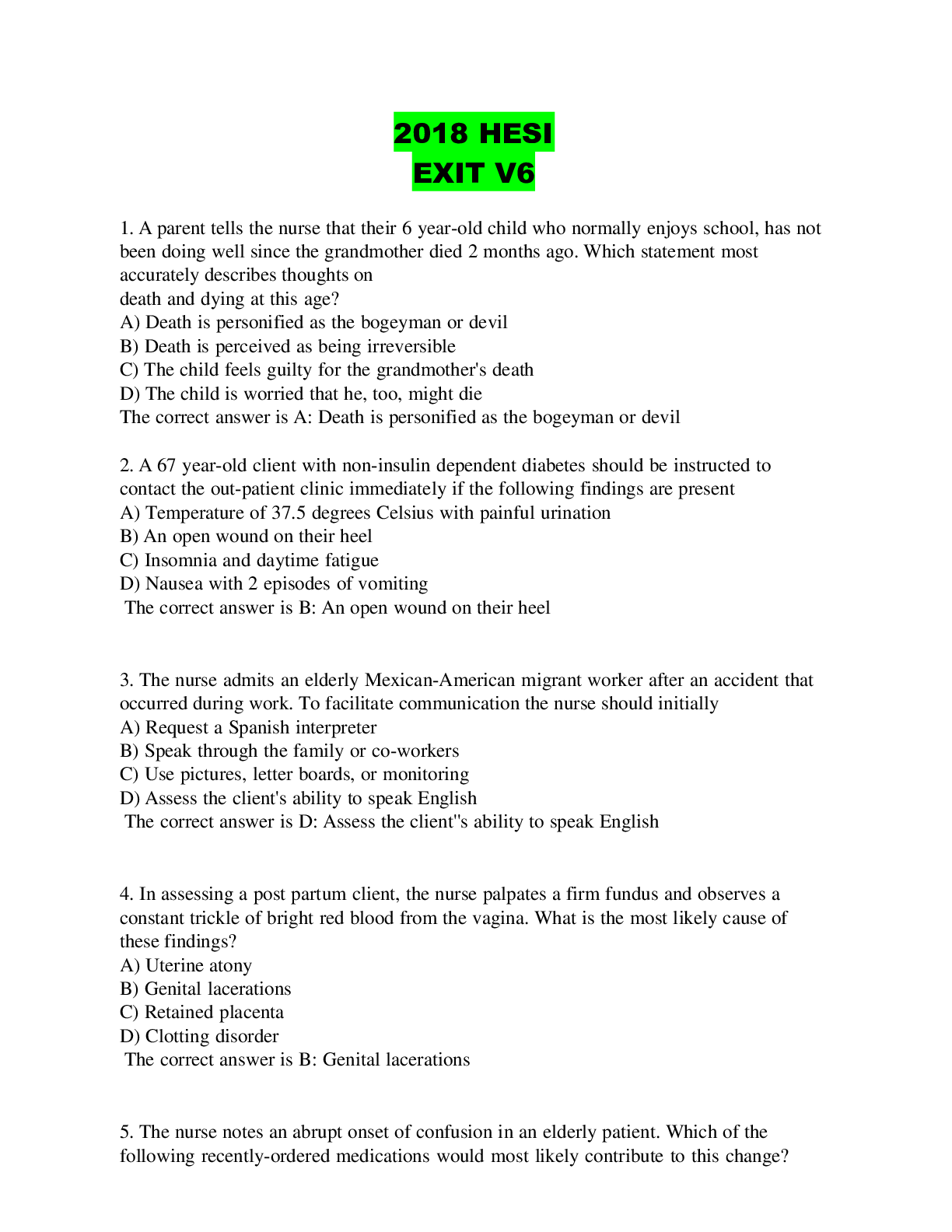


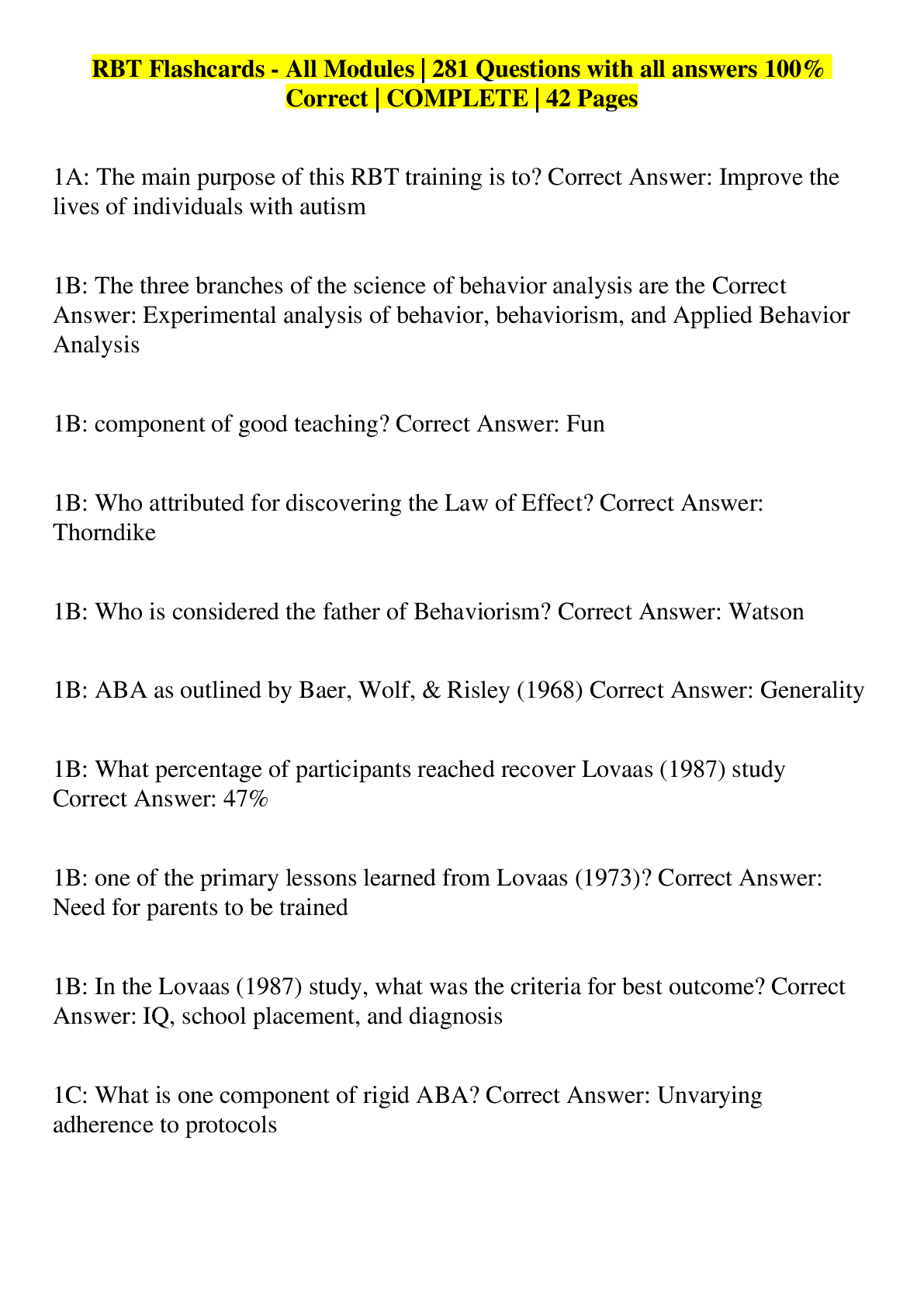





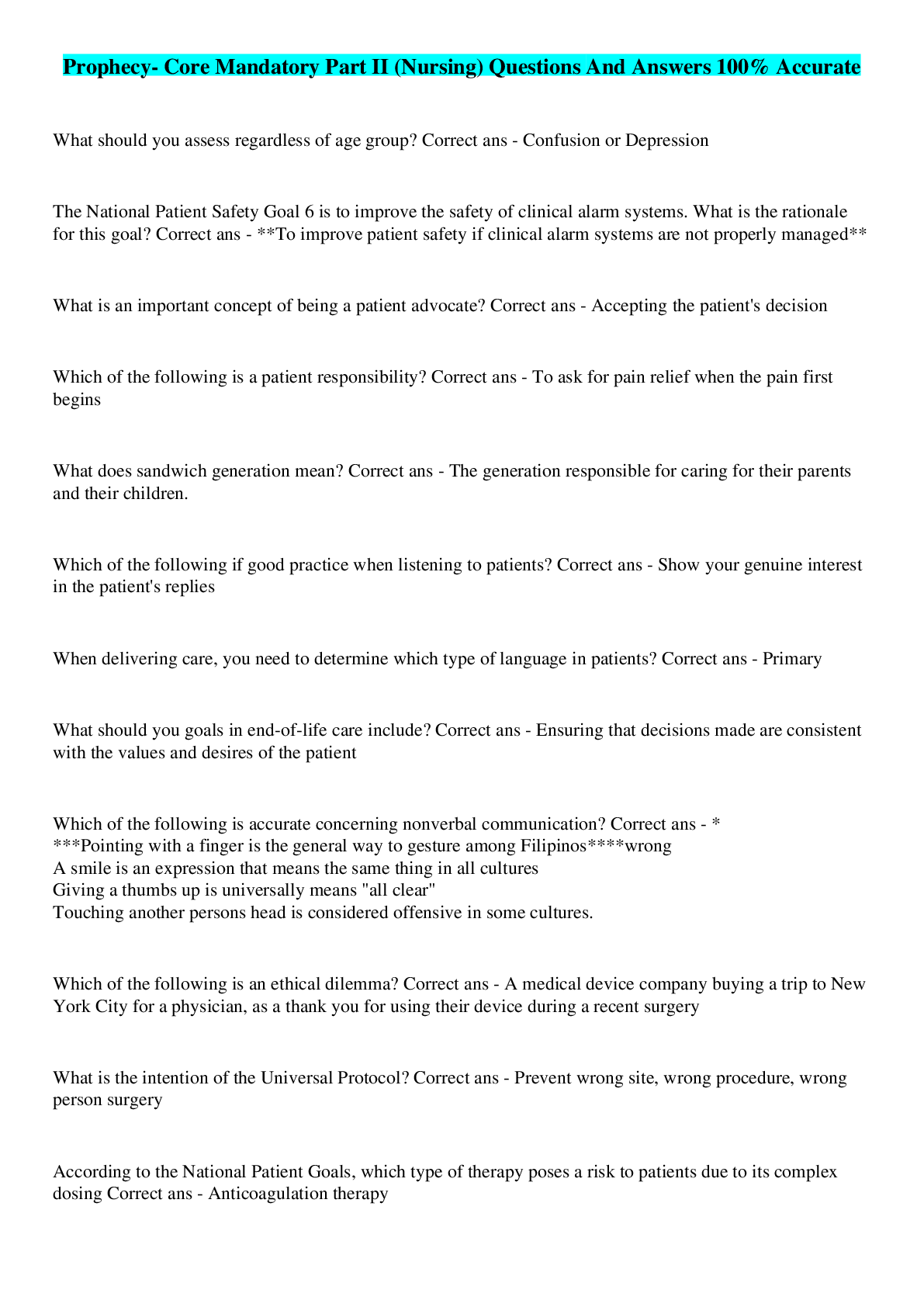
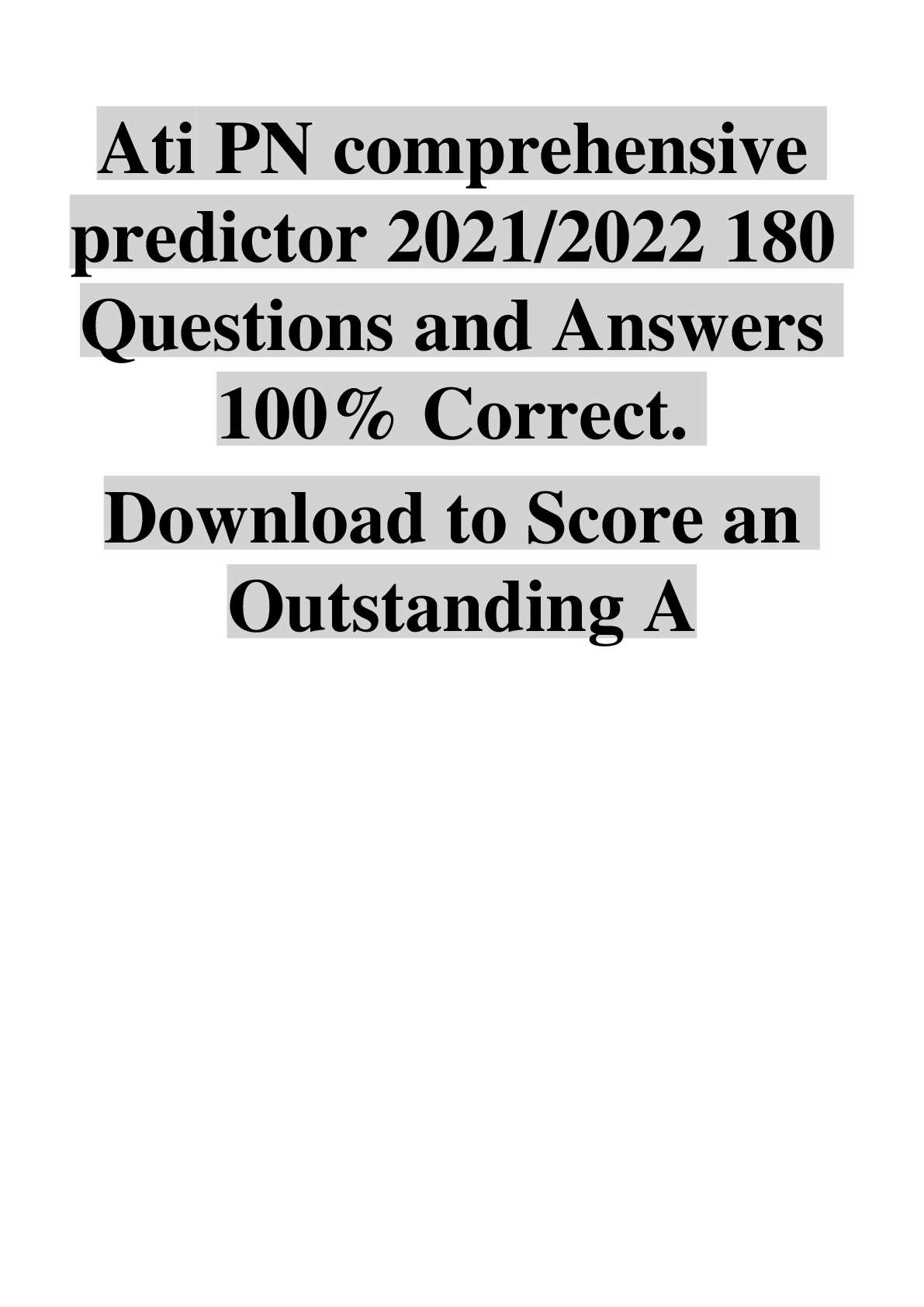
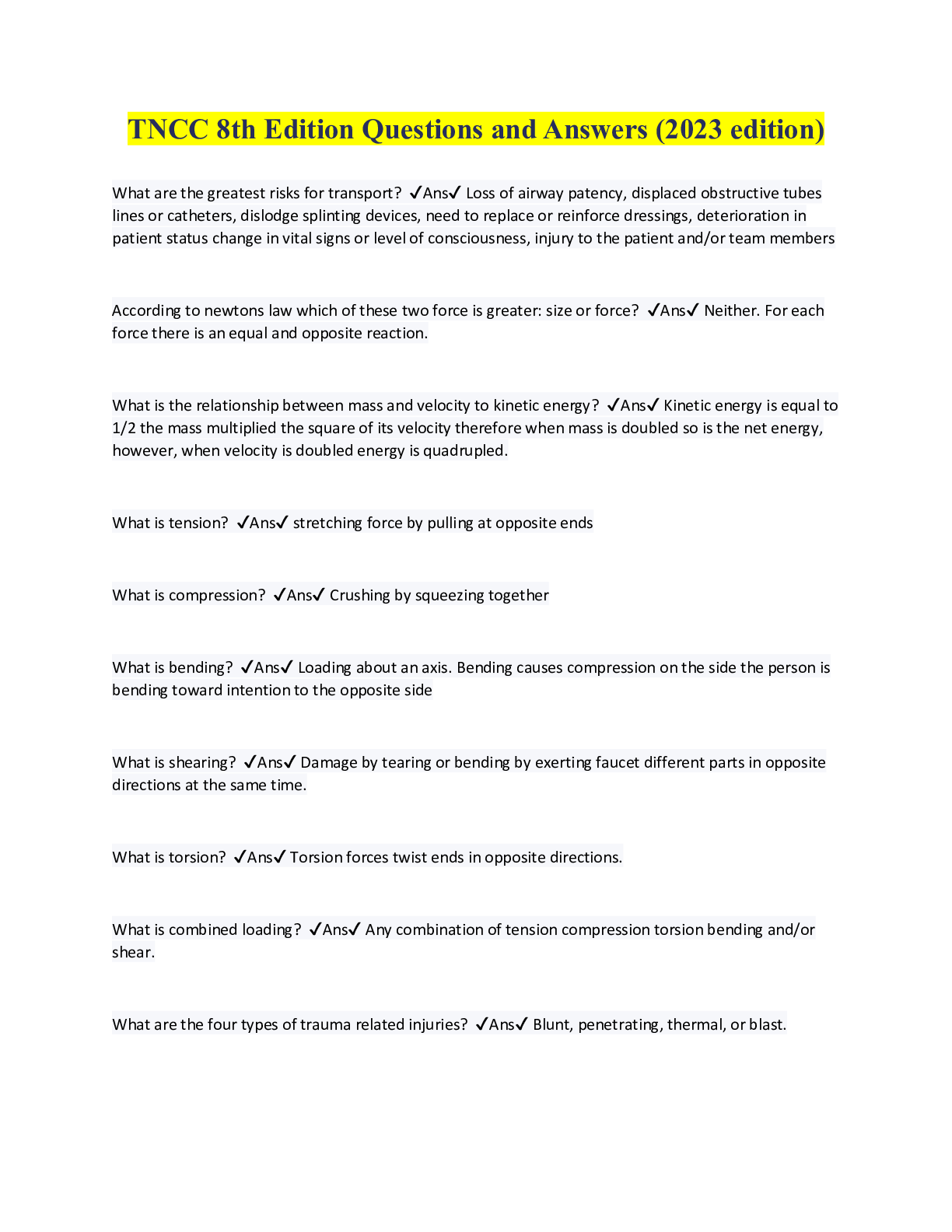
.png)
